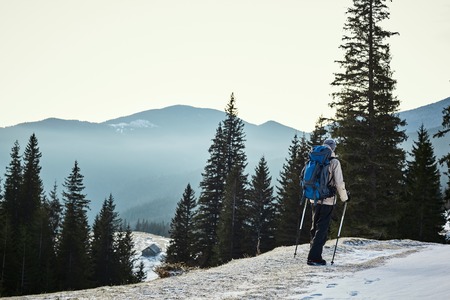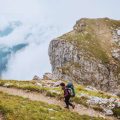1. Understanding U.S. Weather and Trail Environments
The United States is home to a wide range of climates and landscapes, making hiking here a unique experience. From the humid forests of the Southeast to the dry deserts of the Southwest, extreme temperatures can catch hikers off guard if theyre not prepared. Knowing what kind of weather and trail environment youre heading into is key to preventing heat-related illnesses.
Regional Climate Differences
Americas vast geography means that temperature extremes vary greatly from one region to another. Here’s a quick look at how different parts of the country can impact your hiking experience:
| Region | Climate | Popular Trails | Temperature Challenges |
|---|---|---|---|
| Southwest (Arizona, New Mexico) | Desert, very hot summers, low humidity | Grand Canyon, Saguaro National Park | Extreme daytime heat, little shade |
| Southeast (Florida, Georgia) | Humid subtropical, hot summers, high humidity | Appalachian Trail, Everglades National Park | Heat with high humidity; risk of dehydration increases |
| Mountain West (Colorado, Utah) | Alpine, dry air, cooler nights, strong sun at altitude | Rocky Mountain NP, Zion NP | Rapid temperature swings; intense sun exposure |
| Northeast (New York, Vermont) | Temperate, warm summers, variable weather | Catskills, White Mountains | Sporadic heat waves; humidity spikes in summer |
| Pacific Coast (California, Oregon) | Mild Mediterranean near coast; hot inland valleys | Yosemite NP, Pacific Crest Trail | Dramatic differences between coastal and inland temps |
Trail Environment Factors That Affect Temperature Risks
The type of trail you choose also affects your risk for heat illness. Popular U.S. trails can differ in elevation gain, shade coverage, and water availability. For example:
- Canyon trails: Like those in the Grand Canyon often have limited shade and can trap heat.
- High-altitude trails: Such as those in Colorado may feel cooler but offer less oxygen and stronger sun exposure.
- Forest trails: Usually provide more shade but can be humid and muggy in summer months.
- Paved urban trails: Absorb and radiate heat, especially during midday hours.
The Importance of Local Weather Knowledge
No matter where you hike in the U.S., always check the local weather forecast before hitting the trail. Pay attention to temperature highs and lows, humidity levels, UV index, and any regional advisories like excessive heat warnings or fire bans. Being aware of these factors helps you plan better and stay safe on your adventure.
2. Recognizing Signs and Symptoms of Heat Illness
If you’re hiking or backpacking on U.S. trails during the summer, understanding the signs and symptoms of heat-related illnesses can make all the difference. Whether you’re trekking the Grand Canyon or exploring local state parks, spotting trouble early helps keep your adventure safe and fun.
Common Heat Illnesses on American Trails
Heat exhaustion, heat stroke, and dehydration are the most common heat illnesses hikers face. Here’s how to recognize each one:
| Condition | Early Warning Signs | Common Trail Example |
|---|---|---|
| Heat Exhaustion | Dizziness, heavy sweating, nausea, headache, muscle cramps, pale skin, weakness | A hiker in Joshua Tree starts feeling lightheaded and notices sweat-soaked clothes after a few miles in direct sun |
| Heat Stroke | Confusion, hot/dry/red skin (no sweat), rapid pulse, fainting, high body temp (over 103°F) | A backpacker on the Appalachian Trail stops sweating and becomes disoriented while climbing a steep section |
| Dehydration | Dry mouth, thirst, dark yellow urine, fatigue, dizziness, less frequent urination | An ultralight hiker in Utah realizes they haven’t needed a bathroom break for hours and feel very thirsty despite sipping water |
How to Spot These Problems Early
- Listen to your body: If you feel off—nauseous, weak, dizzy—don’t push through it. Take a break in the shade.
- Check your sweat: Suddenly stopping sweating on a hot day is a red flag for heat stroke.
- Pee check: On long hikes, watch your urine color. Clear or light yellow is good; dark means drink more.
- Watch your trail buddies: Sometimes others notice confusion or clumsiness before you do. Always hike with a buddy if possible.
Real-World Trail Tip: “When I was hiking in Yosemite last July,” says Sarah from Colorado, “my friend started stumbling and forgot what day it was. We realized she was showing early signs of heat stroke and got her into shade immediately.”
Remember These Key Terms Used by U.S. Hikers:
- Bonked: Feeling wiped out from heat or lack of fuel/water.
- Cottonmouth: That dry mouth sensation from dehydration.
- No sweat: A big warning sign—if it’s hot out and you stop sweating, take it seriously!
If you notice any of these symptoms in yourself or someone else on the trail, act fast: get to shade, cool down with water or wet bandanas, and rehydrate as soon as possible. Early action keeps a minor problem from becoming an emergency.
![]()
3. Preparation and Gear for Heat Management
When hiking in the U.S., especially during hot summers or in desert regions, having the right gear can make all the difference in preventing heat-related illnesses. Here’s a breakdown of must-have items and tips that American hikers rely on for staying cool and safe on the trails.
Hydration Systems: Staying Ahead of Thirst
Proper hydration is your first line of defense against heat exhaustion. In the U.S., hikers often choose between water bottles and hydration reservoirs (bladders) that fit into backpacks. Many favor brands like CamelBak and Osprey for their durability and convenience. Aim to drink small amounts regularly rather than waiting until you feel thirsty.
| Hydration Gear | Key Features | Why Hikers Love It |
|---|---|---|
| Hydration Reservoir (CamelBak, Osprey) | Hands-free sipping tube, large capacity (2-3L) | Easy access, encourages frequent drinking |
| Insulated Water Bottles (Nalgene, Hydro Flask) | Keeps water cold, durable, wide mouth for ice | Great for refilling at streams or stations |
| Electrolyte Tablets (Nuun, Liquid I.V.) | Adds minerals lost through sweat, easy to carry | Helps prevent cramps and dehydration |
Sun Protection: Shielding Your Skin and Eyes
The American sun can be brutal on open trails. Smart hikers never hit the path without these essentials:
- Sunscreen: SPF 30 or higher, broad-spectrum, water-resistant. Brands like Neutrogena and Coppertone Sport are popular choices.
- Sunglasses: Polarized lenses with UV protection help prevent eye damage—look for Oakley or Smith Optics.
- Wide-brim Hats: A classic Tilley hat or lightweight UPF cap protects your face and neck from direct rays.
- Lip Balm with SPF: Don’t forget your lips! Products like Burt’s Bees or Banana Boat are trail favorites.
Clothing Choices: Dress Smart for the Heat
Your clothing is your first layer of defense against sun and heat. American hikers prefer moisture-wicking, light-colored fabrics that reflect sunlight rather than absorb it. Cotton is usually avoided because it holds sweat; instead, opt for synthetic blends or merino wool.
| Clothing Item | Preferred Materials/Brands | Main Benefits |
|---|---|---|
| Shirts & Pants | Synthetic (Columbia, Patagonia), merino wool (Smartwool) | Quick-drying, keeps you cooler, less chafing |
| Socks | Merino wool blends (Darn Tough, Smartwool) | Breathe well, minimize blisters even when sweaty |
| Neck Gaiter/Buff | Cotton-poly blend (Buff USA) | Doubles as sweat band or face shield from dust/sun |
| Lightweight Rain Shell/Windbreaker | Nylon/polyester (The North Face, Arc’teryx) | Adds a layer of sun protection without overheating you |
Packing Tips from American Trail Veterans:
- Pace Yourself: Start early in the morning when temperatures are lower.
- Rest Often: Take breaks in shaded areas to let your body cool down.
- Avoid Cotton: “Cotton kills” is a saying among U.S. hikers—wet cotton increases risk of chafing and overheating.
- Chemical Cooling Towels: Brands like Frogg Toggs offer instant relief when draped around your neck or over your hat.
- Trekking Umbrellas: Some hikers use lightweight umbrellas like Six Moon Designs for portable shade on exposed trails.
4. Trail Strategies for Preventing Heat Illness
Smart Planning Before You Hit the Trail
When hiking in the U.S., managing extreme temperatures starts with good planning. Park rangers and experienced hikers agree that preparation is key to staying safe from heat illness. Here are some practical tips based on their advice:
Start Early or Go Late
The coolest hours are just after sunrise and before sunset. Many U.S. park services recommend beginning your hike early in the morning or later in the afternoon to avoid peak heat (usually between 10 a.m. and 4 p.m.). This can make a huge difference, especially on open trails without much shade.
Choose Your Trail Wisely
Some trails have more tree cover, water sources, or higher elevations where temperatures are lower. Local hiking clubs often suggest picking shaded routes or those near creeks or rivers during hot months. Check trail descriptions and maps for these features before you go.
| Trail Feature | Why It Matters |
|---|---|
| Shaded paths | Protection from direct sun reduces risk of overheating |
| Water access | Easier to refill bottles and cool off if needed |
| High elevation | Cools down faster than lowlands; less heat exposure |
| Shorter loops | Easier to exit quickly if conditions worsen |
Pace Yourself and Take Breaks
Don’t rush! U.S. hiking groups advise slowing your pace in hot weather, taking frequent breaks, and watching out for symptoms of heat stress in yourself and others. Resting in shaded spots helps keep your body temperature down.
Plan for Water Access
Hydration is crucial on hot trails. The National Park Service recommends carrying at least a half-liter (about 17 ounces) of water per hour of hiking in the heat—and even more if you sweat heavily. Bring a water filter or purification tablets if you plan to use streams or lakes along the way.
| Distance/Time Hiking | Recommended Water Amount (per person) |
|---|---|
| 1 hour / short hike | 0.5–1 liter (17–34 oz) |
| Half day (2–4 hours) | 1–2 liters (34–68 oz) |
| Full day (5+ hours) | 3+ liters (100+ oz) |
Quick Tips from U.S. Hikers:
- Check local weather forecasts before heading out.
- Let someone know your planned route and return time.
- Avoid alcohol and caffeine—they speed up dehydration.
- If you feel dizzy, nauseous, or stop sweating, take immediate action: rest in shade, drink water, and seek help if needed.
This approach combines practical advice from experienced hikers with guidelines from U.S. park services—helping you stay safe while enjoying America’s great outdoors.
5. Responding to Heat-related Emergencies on the Trail
Recognizing Heat-Related Illnesses
When hiking in the U.S., especially during the summer or in desert regions, heat-related emergencies can happen fast. Its important to recognize the signs of heat exhaustion and heat stroke:
| Condition | Common Symptoms |
|---|---|
| Heat Exhaustion | Heavy sweating, weakness, headache, nausea, dizziness, muscle cramps |
| Heat Stroke (Life-Threatening!) | No sweating, confusion, hot and dry skin, rapid pulse, fainting, seizures |
First Aid Steps: What to Do If Someone Shows Symptoms
- Move to Shade or a Cool Area: Get the person out of direct sun. Use whatever shade is available—trees, rocks, or even a backpack for cover.
- Cool Down: Remove excess clothing. Fan them with a hat or map. Pour water over their skin or use damp bandanas. If safe water is nearby (like a stream), wet clothing can help.
- Hydrate: Offer small sips of cool water if they are alert and able to drink. Avoid sugary or caffeinated drinks.
- Lay Down and Elevate Legs: This helps blood flow return to vital organs.
- Monitor Closely: Watch for worsening symptoms like confusion or loss of consciousness.
When and How to Call for Help in the U.S.
If you suspect heat stroke or if symptoms do not improve quickly with first aid, call 911 immediately using your cell phone. In many U.S. parks and wilderness areas, cell service may be spotty—move to higher ground if needed. If no signal is available:
- Use a Personal Locator Beacon (PLB) or Satellite Messenger: These devices are popular among American hikers for remote emergencies.
- Send Someone for Help: If youre part of a group, send at least two people (never one alone) back down the trail to get assistance from park rangers or local emergency services.
- Signal for Rescue: Use a whistle (three sharp blasts is the universal distress signal), brightly colored gear, or make large symbols with rocks visible from above.
Culturally Relevant Tips for U.S. Trails
- Cowboy Up Safely: American hikers value self-reliance but know when it’s time to ask for help—heat stroke is always a medical emergency!
- Know Your Location: Before calling 911, note your trail name/number and nearest landmarks; this helps U.S. dispatchers send help faster.
- Be Ready to Guide Rescuers: On popular trails like those in National Parks, rangers are trained for emergencies—stay put if told so by dispatchers unless your location becomes unsafe.
The right response saves lives. Recognizing problems early and using these culturally relevant steps ensures everyone gets home safe from America’s beautiful but challenging trails.


